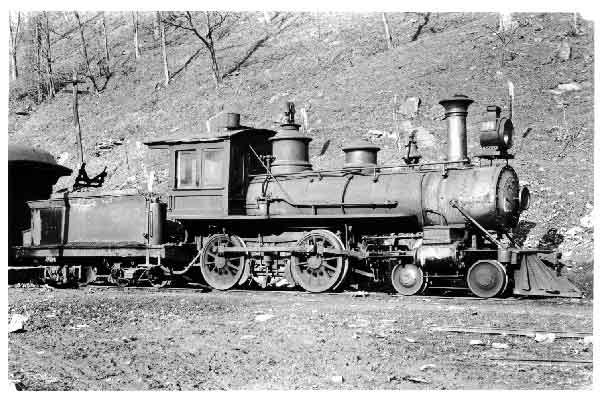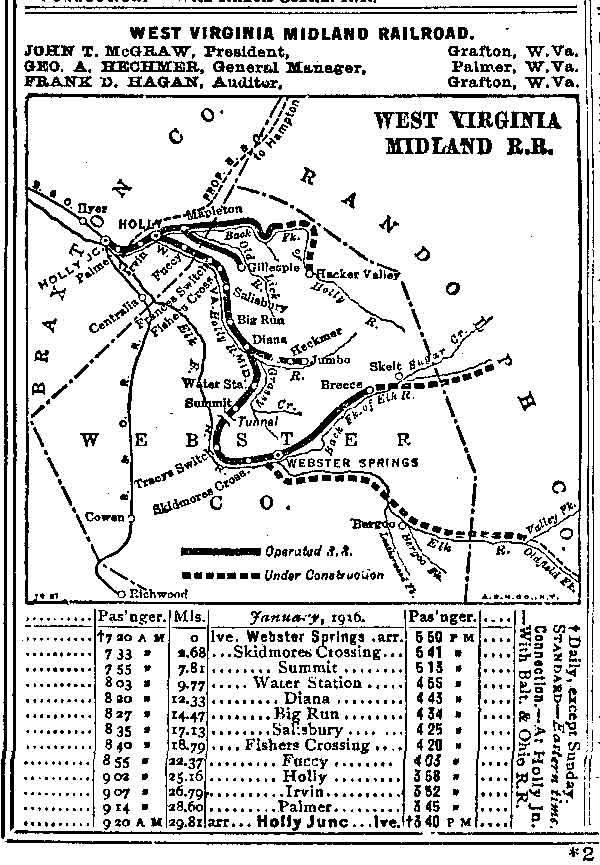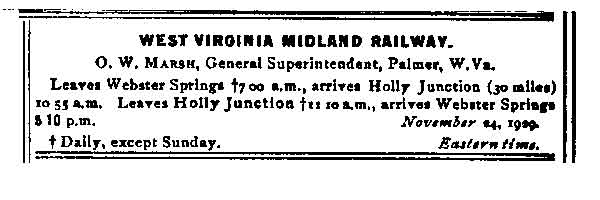by
Don Hensley
Part Two

West Virginia Midland # 3 at Webster Springs, WV in October of 1913.
Photo by K. Schlatcher Sr./Don Hensley Collection
Pittsburg s/n 404 2/1880 ; ex-Pittsburg & Southern # 5(B&O narrow gauge)

Then on August 12, 1905, a new company was chartered, the West Virginia Midland Railroad, though it was not until May 17, 1906 that it was able to absorb the Holly River & Addison. Also in that year a new extension was built from Webster Springs to the coal mines at Breece. The Coalburg branch was taken out of service at this time, the rails may have been used on the new extension. In 1910 a new branch was built from Holly to Long Run. Times however were not good, and the railroad was always in financial trouble. But this was the lot along single purpose railroads. The West Virginia Midland main purpose was hauling out the lumber for it owners and this it did well. All other purposes including passenger and freight service was secondary and was provided because they were a common carrier. Why incorporate a logging road and become a common carrier? This status gave the owners the powers of condemnation and a right of way could be pushed through any land owners property, even if they did not want to sell, and land prices were fixed by the court system. The loggers could operate the railroads at a loss, an expense that would have come off the profit of the sawmill, if they operated the railroad privately. As the railroad company was owned by the sawmill owners, they didn't if the road didn't turn a profit. But their sawmills were listed on the stock market and had many large investors, so it was better that the sawmill return the big profit. The railroad went into receivership on May 20, 1920 after the death of John McGraw. George Curtin took over the company at this time and the West Virginia Railway was formed, but it was not until July 25, 1925 that the courts allowed the takeover to occur. Now the railroad was completely owned by the Pardee & Curtin Lumber Company. But bad news, the Webster Springs Hotel burned down in a fire in June of 1925 and passenger traffic just died.


Please
Help Support the Tap Lines Website
My Photo
Collection Catalog
5x7 ($5) - 8x10($8) - 11x14($11) - 13x19($13)
Museum Quality Heavy Weight Prints
Available Direct from my Studio
Official Guide and Equipment Registers on CD
Builders Lists, Poors Manuals, Photo CDs
Available from: